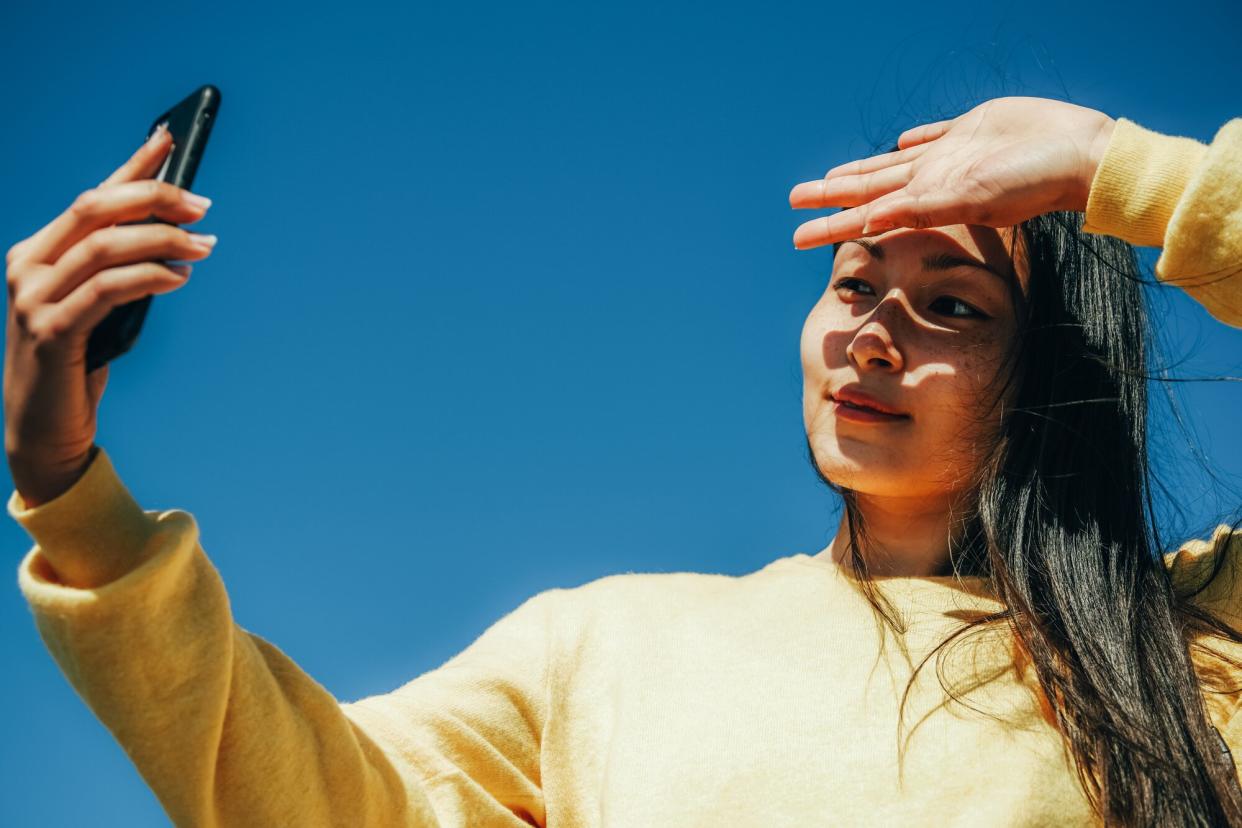People Are Losing It Over This TikTok Filter That Gives You "Puffy" Eyes

Marina Cavusoglu/Getty Images
Social media filters are kind of like foundation collections before the rise of Fenty Beauty: marketed for everyone, but only really applicable to people with light complexions. Only, while foundation is for the skin, filters can change everything about your face, from the coloring, to the actual physical structure. And most of them were made to enhance white, Eurocentric features.
Don't believe me? Take a look at how a filter looks on a person of color, as opposed to a person with Eurocentric features. Most filters slim the nose, enlarge the eyes (or make them blue), and add charmingly sunburnt-flush across the cheeks and the bridge of the nose. On a person with Eurocentric features, the filter exaggerates what they're born with. On a person of color, such a filter makes us look like badly designed live-action anime characters with CG-enlarged alien eyes.
Even more damaging is how such filters warp and distort our perception of our faces, while reinforcing the idea of what we're "supposed" to look like. The effect of these filters accumulates over time, even driving some to seek out surgery to physically change their faces.
Which might be why TikTok's Belle filter is making waves for how it doesn't conform to Eurocentric beauty standards. The filter smooths and evens out the complexions of users and exaggerates the look of aegyo-sal (pronounced as "ayy-gyo-sal"), which is a Korean term that translates most closely to "cutie fat" and refers to the little pudge of skin right beneath the eyes that appears when you smile. It's a popular trend in South Korea to subtly highlight and contour aegyo-sal to give a youthful, cheery, and sweet look.
White TikTok users have criticized how the filter makes them look unattractive, giving what appears to look like eye bags and puffiness. But Asian or bi-racial TikTok users have been using the filter and marveling at how natural and attractive the filter makes them look. TikTok user Kati D'Anjolell says in one of her videos how incredible and natural she looks with the Belle filter on, and how she couldn't understand why it wasn't working for others before realizing that "it literally wasn't made for their features. Just like all the other ones aren't made for my features."
"I never put it together that it's because I am a white-passing, barely-counting-as-a-Wasian Wasian, [but] I still have some of those features!" she continues.
Her fellow TikToker, user @tik.tok.tina, broke down how the filter was actually emphasizing aegyo-sal. "Growing up as a mixed kid, it's sad [for me] looking back and realizing that the parts of me that I was the most insecure about were the parts that were not Eurocentric ... it's so nice feeling beautiful, [and] not squeezing into a box I could never fit in. If you're upset, I guess welcome to the world of not automatically being the default."
RELATED: The Most Popular Inspiration for Plastic Surgery Is Yourself
There have been countless makeup TikToks all about how to conceal and cover up dark circles, essentially flattening and lightening the under eye space. The Belle filter's active countering of that trend is such a revelation because it proves there is no singular definition of beauty. The Belle filter is a tool that social media users can use to connect more closely to their heritage and to embrace the ways that they naturally don't conform to the white status quo. And that's a beautiful thing.

